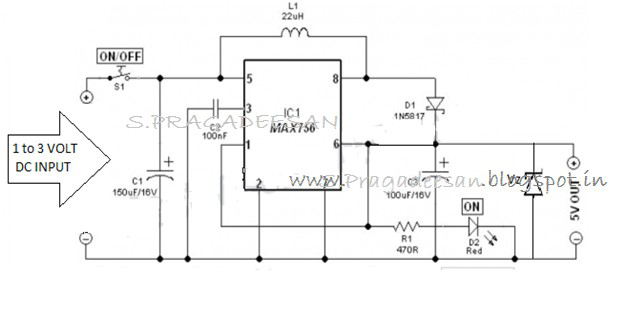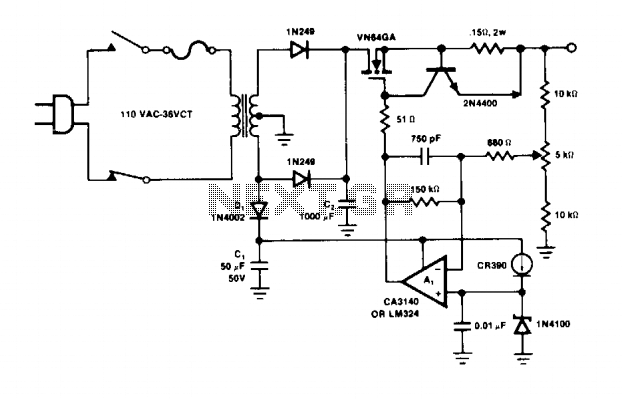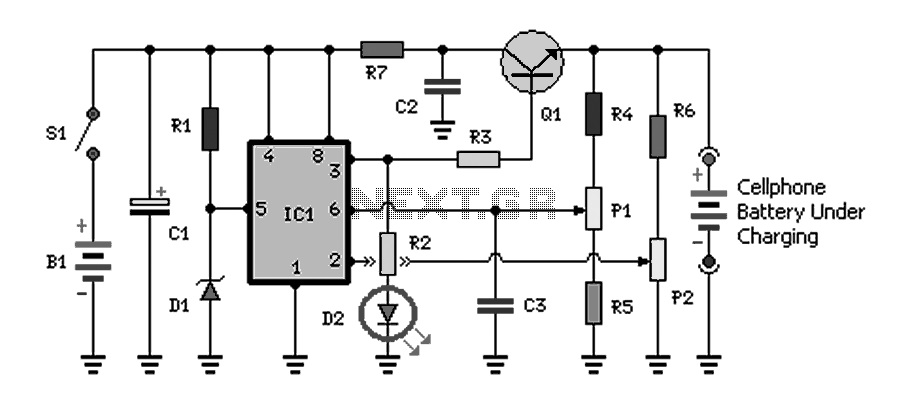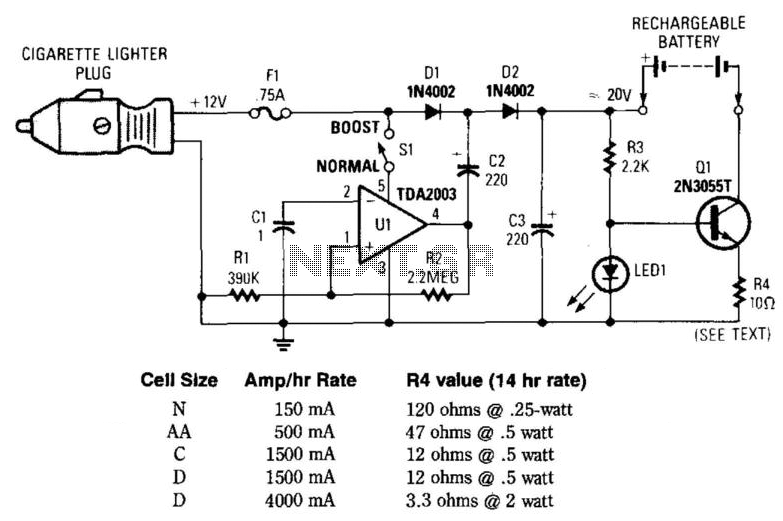
nimh charger for up to six
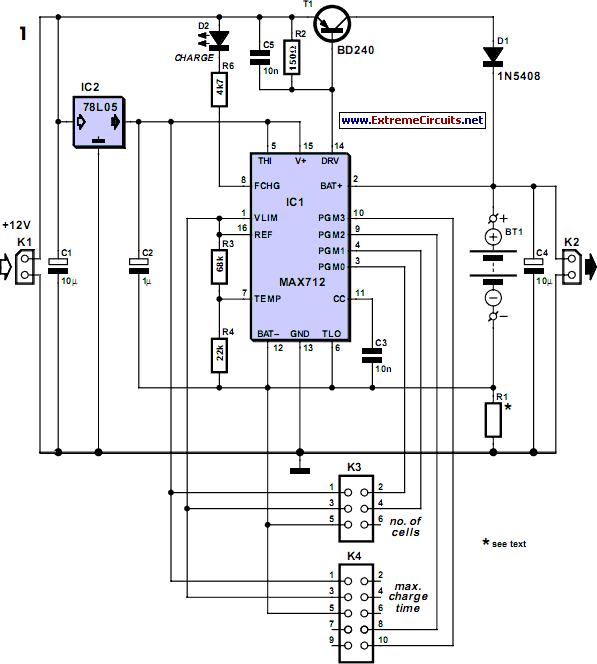
It is difficult to envision modern society without batteries. The number of devices in a household powered by batteries is often surprising. Most of these devices utilize penlight batteries, and environmentally conscious users tend to prefer rechargeable batteries. In the past, nickel-cadmium (NiCd) batteries were commonly used; however, they have a high self-discharge rate and suffer from the memory effect. Nowadays, nickel-metal hydride (NiMH) batteries are more prevalent due to their lack of the memory effect and generally higher capacity, allowing for longer usage before needing a recharge. Consequently, every household could benefit from having a battery charger. A reliable charger must monitor several parameters to ensure proper battery charging. It should ensure that the voltage per cell does not exceed safe limits, track the charging curve to determine when a battery is fully charged, and halt the charging process if it takes too long, indicating a potential issue. Additionally, monitoring the temperature of the cells is important to prevent overheating. The circuit presented here is designed specifically for charging NiMH batteries. The MAX712 integrated circuit (IC) provides all necessary functionality for controlled charging. The schematic of the charger features the MAX712 (IC1) at its core, which is available in a standard dual in-line package (DIP), making it suitable for hobbyists using standard through-hole prototyping boards. IC1 employs transistor T1 to regulate the current flowing to the battery, while resistor R1 is used by IC1 to measure the current. During charging, IC1 aims to maintain a constant voltage of 250 mV across R1. The charging current can be set by adjusting the value of R1, which can be calculated using the formula: R1 = 250 mV / I_charge. For a charging current of 1 A, R1 should be 0.25 ohms, with a power dissipation of 250 mW, making a 0.5-watt resistor adequate. Depending on the charging current and supply voltage, transistor T1 may require a heatsink. IC1 also requires minimal user input regarding the maximum charging time and the number of cells to be charged, facilitated through four special inputs (PGM0 to PGM3) that recognize four different states: V+, Vref, BATT, or not connected. To enhance user-friendliness, these connections are brought out to two connectors (K3 and K4), allowing for the use of dongles (illustrated in Figure 2) that can be plugged in to set the number of cells and maximum charging time. The maximum charging time can be calculated using the formula: T_charge = C_cell / I_charge - 1.2, where C_cell is the capacity in amp-hours (e.g., 1200 mAh = 1.2 Ah). After determining the nominal charging time, the first dongle with a value equal to or greater than the calculated charging time should be selected. For example, if the calculated maximum charging time is 38 minutes, the dongle for 45 minutes should be chosen. If IC1 is replaced with a MAX713, the charger can also charge NiCd batteries, although it will no longer be suitable for NiMH batteries. The primary distinction between these two ICs lies in the detection point that indicates when the cells are fully charged, while the pinout and adjustment methods remain identical. To facilitate easy interchangeability between the ICs, an IC socket for IC1 is recommended.
The charger circuit for NiMH batteries utilizes the MAX712 integrated circuit, which incorporates features necessary for efficient charging. The design includes a current regulation mechanism through transistor T1, ensuring that the charging current remains stable. Resistor R1 plays a crucial role in current measurement, allowing the IC to maintain a consistent voltage across it, thereby enabling precise control of the charging process.
The charger is designed to accommodate various battery configurations, as indicated by the user-programmable inputs. This flexibility is essential for households that may utilize different battery types and capacities. The inclusion of dongles simplifies the setup process, allowing users to easily adjust the charging parameters without extensive technical knowledge.
In addition to monitoring voltage and current, the circuit can be designed to include temperature sensors to enhance safety during the charging process. This feature can prevent overheating, which is a common issue with battery charging, particularly with older battery technologies.
Overall, this battery charger circuit exemplifies modern engineering practices in consumer electronics, emphasizing efficiency, safety, and user-friendliness. The transition from NiCd to NiMH batteries reflects broader trends in environmental consciousness and technological advancement, making this charger a relevant and necessary component in contemporary households.It is impossible to imagine present day society without any batteries. Count the number of gadgets in your house that are powered from batteries, you will be stunned by the number of batteries you will find. The majority of these devices use penlight batteries and if you`re a little environmentally conscious you will be using rechargeable batterie
s. A few years ago these batteries were invariably NiCd types. However, these batteries suffer from a relatively high rate of self-discharge and from the so-called memory-effect. It is now more common to use NiMH batteries. The advantage is that these batteries do not suffer from the memory-effect and generally also have a much higher capacity, so that they last longer before they have to be recharged again.
From the above you can conclude that every household these days needs, or could use, a battery charger. A good charger needs to keep an eye on several things to ensure that the batteries are charged properly.
For one, the charger has to make sure that the voltage per cell is not too high. It also needs to check the charging curve to determine when the battery is fully charged. If the charging process is taking too long, this is an indication that something is wrong and the charger must stop charging. Sometimes it is also useful to monitor the temperature of the cells to ensure that they do not get too hot.
The circuit presented here is intended for charging NiMH batteries. The MAX712 IC used here contains all the necessary functionality to make sure that this happens in a controlled manner. Figure 1 shows the schematic of the charger. The heart of the circuit is easily recognized: everything is arranged around IC1, a MAX712 from Maxim.
This IC is available in a standard DIP package, which is convenient for the hobbyist because it can be directly fitted on standard though-hole prototyping board. IC1 uses T1 to regulate the current in the battery. R1 is used by IC1 to measure the current. While charging, IC1 attempts to maintain a constant voltage, equal to 250 mV, across R1. By adjusting the value of R1 the charging current can be set. The value of R1 can be calculated using the formula below: R1 = 250 mV / I charge For a charging current of 1 A, the value of R1 has to be 250 mV / 1 A = 0.
25 . The power dissipated by R1 equals U G— I = 0. 25 G— 1= 250 mW. A 0. 5-watt resistor will therefore suffice for R1. Transistor T1 may need a small heatsink depending on the charging current and supply voltage. IC1 needs a small amount of user input regarding the maximum charging time and the number of cells in the battery to be charged. IC1 has four inputs, PGM0 to PGM3, for this purpose. These are not ordinary digital inputs (which recognise only 2 states) but special inputs that recognise 4 different states, namely V+, Vref, BATT or not connected.
To make this a little bit more user friendly, we`ve brought out the necessary connections to 2 connectors (K3 and K4). A number of dongles have been made (Figure 2) that can be plugged into these connectors and set the number of cells and the maximum charging time.
When determining the maximum charging time we have to take into account the charging current and the capacity of the cells that are connected. The charging time can be calculated with the formula: Tcharge = Ccell / I charge G— 1. 2 where Ccell is the capacity in Ah (e. g. , 1200 mAh = 1. 2 Ah). After the nominal charging time has been calculated, we can use the first dongle that has a value that is equal or greater than the calculated charging time.
For example, if we calculated a maximum charging time of 38 minutes, we have to select the dongle for 45 minutes. When IC1 is replaced by a MAX713, the charger becomes suitable for charging NiCd batteries (but not suitable for NiMH batteries any more!).
The only difference between these two ICs is the value of the detection point at which the cell(s) are considered to be completely charged. The ICs are otherwise identical with regard to pin-out, method of adjustment, etc. To make it easy to swap between the ICs, we recommend an IC-socket for IC1. 🔗 External reference
The charger circuit for NiMH batteries utilizes the MAX712 integrated circuit, which incorporates features necessary for efficient charging. The design includes a current regulation mechanism through transistor T1, ensuring that the charging current remains stable. Resistor R1 plays a crucial role in current measurement, allowing the IC to maintain a consistent voltage across it, thereby enabling precise control of the charging process.
The charger is designed to accommodate various battery configurations, as indicated by the user-programmable inputs. This flexibility is essential for households that may utilize different battery types and capacities. The inclusion of dongles simplifies the setup process, allowing users to easily adjust the charging parameters without extensive technical knowledge.
In addition to monitoring voltage and current, the circuit can be designed to include temperature sensors to enhance safety during the charging process. This feature can prevent overheating, which is a common issue with battery charging, particularly with older battery technologies.
Overall, this battery charger circuit exemplifies modern engineering practices in consumer electronics, emphasizing efficiency, safety, and user-friendliness. The transition from NiCd to NiMH batteries reflects broader trends in environmental consciousness and technological advancement, making this charger a relevant and necessary component in contemporary households.It is impossible to imagine present day society without any batteries. Count the number of gadgets in your house that are powered from batteries, you will be stunned by the number of batteries you will find. The majority of these devices use penlight batteries and if you`re a little environmentally conscious you will be using rechargeable batterie
s. A few years ago these batteries were invariably NiCd types. However, these batteries suffer from a relatively high rate of self-discharge and from the so-called memory-effect. It is now more common to use NiMH batteries. The advantage is that these batteries do not suffer from the memory-effect and generally also have a much higher capacity, so that they last longer before they have to be recharged again.
From the above you can conclude that every household these days needs, or could use, a battery charger. A good charger needs to keep an eye on several things to ensure that the batteries are charged properly.
For one, the charger has to make sure that the voltage per cell is not too high. It also needs to check the charging curve to determine when the battery is fully charged. If the charging process is taking too long, this is an indication that something is wrong and the charger must stop charging. Sometimes it is also useful to monitor the temperature of the cells to ensure that they do not get too hot.
The circuit presented here is intended for charging NiMH batteries. The MAX712 IC used here contains all the necessary functionality to make sure that this happens in a controlled manner. Figure 1 shows the schematic of the charger. The heart of the circuit is easily recognized: everything is arranged around IC1, a MAX712 from Maxim.
This IC is available in a standard DIP package, which is convenient for the hobbyist because it can be directly fitted on standard though-hole prototyping board. IC1 uses T1 to regulate the current in the battery. R1 is used by IC1 to measure the current. While charging, IC1 attempts to maintain a constant voltage, equal to 250 mV, across R1. By adjusting the value of R1 the charging current can be set. The value of R1 can be calculated using the formula below: R1 = 250 mV / I charge For a charging current of 1 A, the value of R1 has to be 250 mV / 1 A = 0.
25 . The power dissipated by R1 equals U G— I = 0. 25 G— 1= 250 mW. A 0. 5-watt resistor will therefore suffice for R1. Transistor T1 may need a small heatsink depending on the charging current and supply voltage. IC1 needs a small amount of user input regarding the maximum charging time and the number of cells in the battery to be charged. IC1 has four inputs, PGM0 to PGM3, for this purpose. These are not ordinary digital inputs (which recognise only 2 states) but special inputs that recognise 4 different states, namely V+, Vref, BATT or not connected.
To make this a little bit more user friendly, we`ve brought out the necessary connections to 2 connectors (K3 and K4). A number of dongles have been made (Figure 2) that can be plugged into these connectors and set the number of cells and the maximum charging time.
When determining the maximum charging time we have to take into account the charging current and the capacity of the cells that are connected. The charging time can be calculated with the formula: Tcharge = Ccell / I charge G— 1. 2 where Ccell is the capacity in Ah (e. g. , 1200 mAh = 1. 2 Ah). After the nominal charging time has been calculated, we can use the first dongle that has a value that is equal or greater than the calculated charging time.
For example, if we calculated a maximum charging time of 38 minutes, we have to select the dongle for 45 minutes. When IC1 is replaced by a MAX713, the charger becomes suitable for charging NiCd batteries (but not suitable for NiMH batteries any more!).
The only difference between these two ICs is the value of the detection point at which the cell(s) are considered to be completely charged. The ICs are otherwise identical with regard to pin-out, method of adjustment, etc. To make it easy to swap between the ICs, we recommend an IC-socket for IC1. 🔗 External reference
